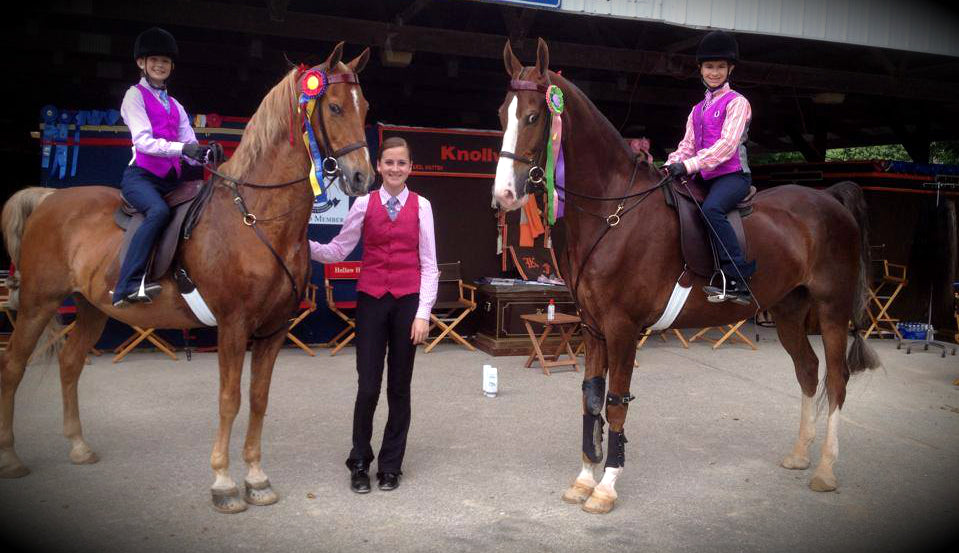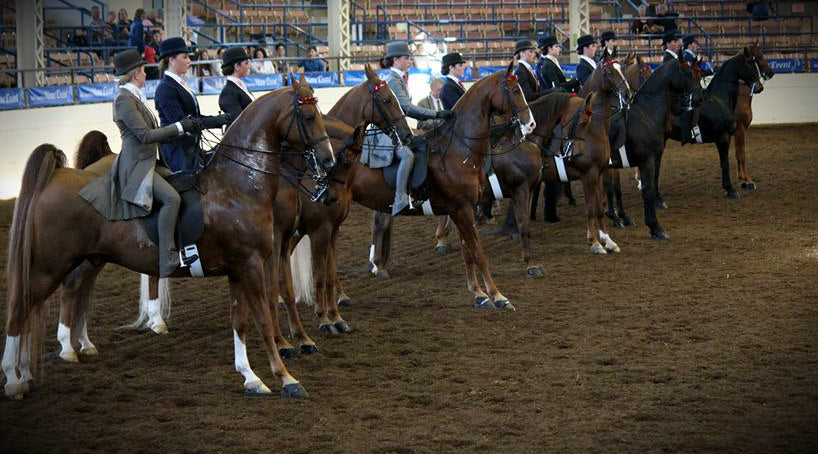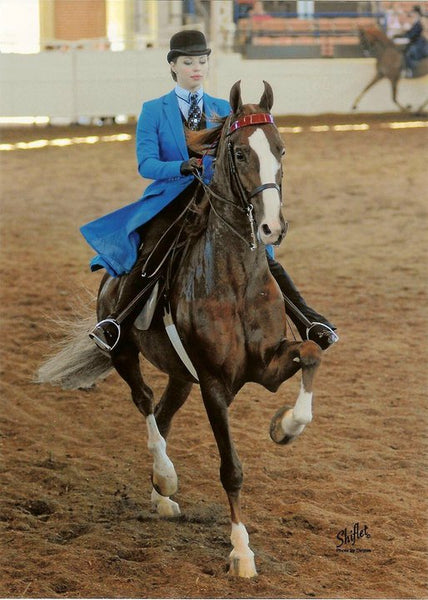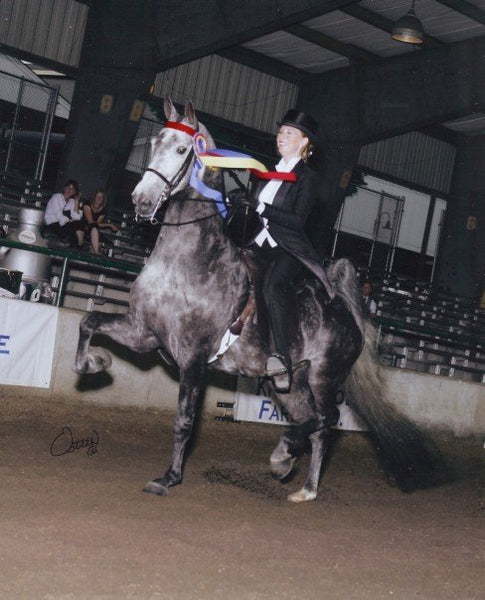From Academy to A Circuit: What Changes? January 26 2015 1 Comment

While many in the Saddlebred industry started their show career at Midwest in a Walk and Trot or Walk only leadline class, many more of us started our Saddlebred career with academy showing and worked our way up to A Circuit showing. But before getting into the biggest differences between academy and A Circuit, it’s important to acknowledge that both are incredibly important to our industry and our learning, and that both should be equally regarded as funnels for building and growing the Saddlebred and industry. Showing in the A Circuit does not mean that the riders are better, just like showing in Academy doesn’t mean you aren’t capable of showing A Circuit.
However, there’s often a hullabaloo associated with making a transition from academy to A Circuit, and here are the three things that we found to be notably different when we decided to go from academy to A Circuit.
The Horse
We all love our school horses, but compared to an A Circuit show horse, academy horses are a totally different animal (pun fully intended). Academy horses go forever, show in a ton of different classes at any given show and are often bomb proof, giving any rider a safe and fun learning experience. A Circuit show horses are powerful, have tons of motion, and are usually only shown in one division (meaning you get a qualifier and a championship and that’s it). These animals have motors on them and live to be in the show ring, in front of people, hearing the cheer of the crowd and gelling with their rider, becoming a fluid and unstoppable team. On the other hand, academy horses live to be loved, to teach their riders, and to challenge them in silly ways (like pulling them out of the turns or having a bit - or a lot - more “go forward” than they do at home).
The Outfit
Academy regulations are different by region, but in the midwest, jods, a button down shirt, vest, tie, hair in a bun, nice clean boots and gloves comprise the academy show outfit (with appropriate accessories of course). A Circuit outfits require a whole lot more, and vary depending on what division you and your horse plan to be showing in.
Equitation

If you are in equitation you will want a solid colored suit (meaning jacket and jodhpurs are the same color and pattern - no day coat), button down shirt, vest, tie, gloves, hair in a bun, matching derby, and matching boots. You will also need a formal or “tux” for evening classes, black or navy tux with the proper tux shirt and vest, studs for the buttons, bowtie, top hat, white or black gloves, matching boots and appropriately accompanied accessories for both day and night classes.
Performance

If you are in a performance division you can wear the same, solid colored suit ensemble, or you can get more creative with a day coat and suiting ensemble. This usually comes in the format of a solid pair of jods with a patterned coat in the same color family (plaid or some other variety of textured fabric).
Three-Gaited or Park

If you are showing in the three-gaited or park subdivisions of Performance you will also need a tux of the same variety, however, you can also go for a “day coat” style of tux, where the coat, just like the day coat for a regular suit, does not match the jods. We could go on and on about the little bits and pieces of show suiting, but the fundamentals are this: academy - one outfit, A Circuit - many outfits with many pieces.
The Bridle
Once again regulations on this topic are regionally different and also in the midst of being changed by certain governing bodies, but typically speaking, you don’t see an academy horse showing in a double bridle, whereas you only see A Circuit horses in a double bridle. Many academy horses are seen in the show ring in their at-home bridles (clean and dressed up with ribbons of course), but it’s usually a snaffle bridle, perhaps with a german martingale or some variety thereof. The A Circuit horses are in double bridles with two bits in their mouth with ENDLESS varieties on those bits, but often, one is a smooth or twisted snaffle and one is a curb with long shanks to which the curb rein is connected at the bottom. This gives the rider far more leverage than a typical snaffle bridle with two reins and also requires a much more subtle hand. We all know Saddlebreds are a breed that are typically naturally light in the bridle and require little corrections here and there. With such a powerful bridle as part of the showing requirement, to ride A Circuit, you must be able to ride with a light hand, make the necessary and proper adjustments, and keep your hands independent from your body movements (aka no posting from the bridle - NO horse will thank you for that kind of behavior). While these are all goals in academy, it’s far more challenging to find the forgiving nature we so often see in school horses packaged in the exciting mentality of a show horse competing on the A Circuit level, and the bridles the school horses wear allow for that type of learning in the show ring.
Wrapping Up
There are SO SO many more differences between academy and A Circuit that we could go into, and these are just a start. Do you dave any differences you noticed when making the switch from one showing experience to the other? Let us know in the comments below!


Comments
Shelley on March 09 2015 at 04:44PM
You should have mentioned that ASTM/SEI certified helmets are allowed in ALL A Circuit classes, including equitation, without penalty, per USEF Rules. Judges are NOT allowed to penalize riders wearing helmets. Derbies or top hats are not required attire in any class; a helmet may be substituted for either. Parents whose children are transitioning from academy to the A Circuit need to know that they have this option.